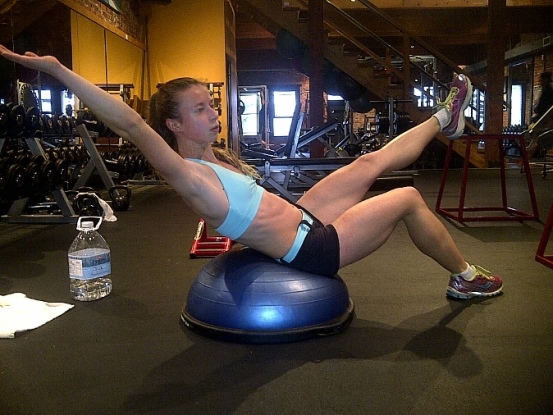Running injury prevention is one of the most important things that I like to cover early on whenever I coach running clinics or take on new clients. Chances are, if you run, you have been injured before. If you have been injured before, you know injuries are not fun.
Injuries take all the joy out of running. So what are some things you can do to prevent them?
1.Understand your injury threshold, which is different for everyone.
You have to avoid the “terrible toos”, which are: too much, too soon, too fast. Some people can get hurt running 15 miles per week, while others can run 150 miles a week before they experience any issues.
I have worked with people of all levels of injury threshold and have successfully helped them reach their goals through progressive approach to increasing their weekly mileage.
If you’re in doubt, then I recommend doing less because sometimes “less is more”. The safest way to build up your training volume is to not increase your weekly mileage by more than 10% per week.
2. Build your base first.
There is a reason why I don’t shove hills and intervals down people’s throats when they first start training with me. Your body needs some time to adjust to your new training schedule and that’s why I tell people to spend the first 4-8 weeks (depending on the total length of your training plan) to do easy runs.
Building your base will prepare your muscles and joints for the hills, drills and speedwork thrills in your future. Think of your training plan like a pyramid. With a strong and wide base, it’s less likely to fall apart.
3. Don’t do two hard workouts in a row.
Your body needs about 48 hours to recover after a hard interval or hill workout. If you do a hard workout, then you should do an easy workout for the next two days (or even take a rest day if it was very hard).
If you do too many hard workouts in a row, you will not recover as fast and are more likely to get injured. The body needs time to adapt to the stresses of a hard workout and to recover.
4. Avoid Over-striding.
Over-striding can increase your chances of injury because it often causes you to land heavily on your heel and puts a lot of pressure on your joints. If you are over-striding and landing on your forefoot, that causes a lot of pressure on your calves and Achilles tendon. Therefore, regardless of which part of the foot you are landing on, over-striding is not good for you.
In addition to putting pressure on your joints, it also reduces your running efficiency by causing a breaking action with every step. This prevents you from smoothly moving forward.
With that in mind, work on shortening your stride and increasing your cadence. Aim for a cadence of about 160-180 strides per minute. Land with your foot directly underneath or slightly behind your hips, rather than in front of you. This will help you run with less effort and less impact on your joints because you will be able to land softer.
Above: Running Cobble Hill 10k 2016 and I’m noticing that my foot is touching right under my hip (possibly even slightly behind it). I’m also leaning slightly forward. When I looked at the cadence I also noticed that my average cadence was 176 strides per minute. I was happy with that.
5. Strength train to balance your body.
Runners who just run all the time end up getting injured because of the repetitive nature of running. It’s important to keep your core, glutes and back strong if you want to continue improving as a runner and avoid potential setbacks. It’s also important to balance out your quads and hamstrings.
You are far less likely to get injured when you have balance around your hip, knee and ankle joints. In running, some muscles are overused and some are not used enough, which is why strength training is an important part of every running program. By “strength training” I don’t mean that you need to lift as heavy as you can or do curls for the girls all the time. What I mean is functional movement that increases core stability, glute strength, back strength, and balance.
Contrary to popular belief, strength training will not make you too bulky to run fast. In fact, it will make you lean, toned and serve as a defence against injuries. In order to get “bulky” from strength training, you’d have to do something completely different from what I have the runners doing. As far as I know, no one accidentally developed a body-building physique.
Above: Core exercise using the bosu ball.
6. Listen to your body.
If something hurts in a bad way, take 3 days off. Then, try an easy jog to see if you still feel the bad pain. If you don’t feel any bad pain, then you may resume your training program. If the pain is still there, take another 3 days off. If you don’t feel it after that, you may continue training. If it still hurts after 6 days off, then you should see a physiotherapist.
7. Run on an even surface.
If you are consistently running on a slanted road or sidewalk the same way, then you will develop leg length discrepancy because one foot will hit lower on the slope than the other. This can cause hip and knee injuries because your pelvis is no longer stable combined with the impact of running. If one hip is higher than the other, your likelihood of injury increases.
You should also avoid constantly going the same way on the track when doing intervals. Continuously going around the curve of the track causes a similar effect.
8. Don’t forget to stretch.
There is a correlation between tight calves and Plantar Fasciitis and Achilles Tendonitis. Additionally, there is a link between hamstring and hip flexor tightness and hip and knee injuries.
If you sit at a desk all day, it’s very important that you pay attention to hip flexor tightness. Because of where the hip flexors attach (the vertebrae of the lower back), tight hip flexors can correlate with lower back pain.
Also, you should take care of your IT band to make sure it’s not too tight, or else you will experience pain on the outer side of the knee.
9. Cross train.
There are several ways to cross train to maintain your fitness, including: swimming, stationary bike, outdoor cycling, Nordic Track, elliptical trainer, and the rowing machine.
10. Get proper shoes.
If there is one thing I know, it’s the importance of proper running shoes. Although shoes can’t cure injuries, proper shoes can help prevent them. Every foot is different so it’s very important to get fitted for shoes by an expert. If a shoe salesperson tells you that “Shoe X” is perfect for you, don’t be afraid to ask them questions. They have to be able to tell you why they believe that it’s the best shoe for you.
If you’re a pronator that wears shoes designed for someone who is a supinator, can you see where the problem is? It’s amplifying the problem you already have making you even more susceptible to injuries.
11. Foam rolling and massages.
They both help decrease muscle tightness. When muscles have their full range of motion, they are much happier and healthier. Don’t forget to foam roll your IT band (it really hurts the first time you try it).
I hope that you found this information helpful. Please share with all your running friends so we can help each other prevent running injuries.


stays on topic and states valid points. Thank you.